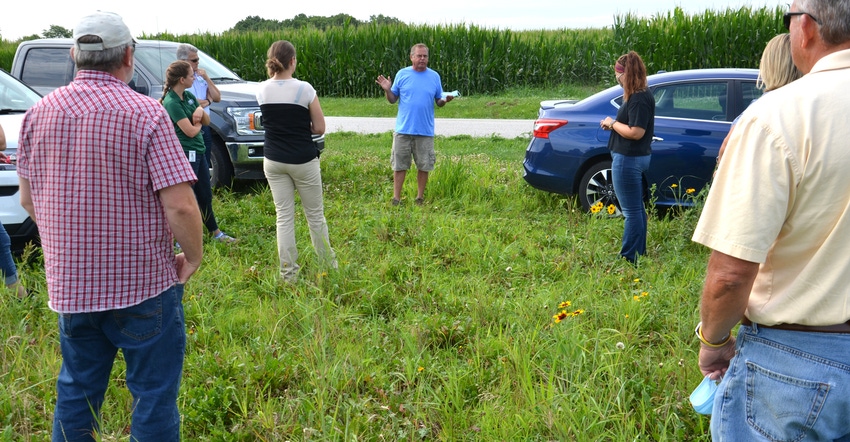August 3, 2020

Mike Starkey, Brownsburg, Ind., has hundreds of neighbors. He lives across the road from a subdivision. He believes it’s important to show those people what agriculture is all about, what it does for the community and how important it is to the success of Indiana.
How does he do that? It starts with inviting people to visit the farm — both local people and those from government, including members of the EPA. In the past, EPA personnel have visited Starkey’s farm, at his invitation, to see how an actual farm operates.
Here’s a closer look at ways to help your neighbors become more aware of agriculture:
Invite visitors. Every year Starkey invites staff members of the Indiana State Department of Agriculture to visit his farm. This year, about a dozen visited, including new staff members and interns. Even ISDA Director Bruce Kettler came along.
This year, Matt Williams, an ISDA soils technician who works in several counties, including Hendricks County where Starkey farms, demonstrated how no-till soils react differently to rain events than conventional soils. Starkey has no-tilled both corn and soybeans for more than 20 years, and has used cover crops for 15 years.
ISDA likes to expose its staff to facets of agriculture they may not understand. For example, Starkey talked about the Tri-State Fertilizer recommendations, and why he believes he can apply less fertilizer than those standards recommend because he no-tills. When the subject came up again half an hour later during a tour of fields, someone within the group asked, “Does everyone know what he is talking about?” As it turns out, only a couple within the group did. So, Starkey backed up the truck and explained what the recommendations are used for, and why he follows his own guidelines.
Sometimes assuming that nonfarm people understand farming is a stretch — even those in jobs semi-related to ag. Help your cause by making sure you’re on the same page as the people you’re talking with.
Showcase conservation practices. Starkey enrolled a sizable amount of land in the Field Borders program two years ago. He leaves permanent strips around fields along county roads, seeded to plant types common in pollinator plots, including warm-season grasses and flowering plants.
It’s a buffer that keeps water in the field, and it also lets Starkey get trucks off busy county roads during rush hour.
“I’ve also found it’s a way to break the ice with neighbors,” he says. “Sometimes people ask me why I leave those strips, or why there are pretty flowers along the edge of my fields. It gives me a chance to explain what I do to promote conservation and cleaner water, and support wildlife habitat. It can be a conversation starter.”
Sell locally grown products. A couple of the ISDA visitors this year are on the staff of ISDA’s Indiana Grown program. Although Starkey doesn’t sell meat or any other products directly to consumers, he believes it’s a great way to promote agriculture.
“It’s one of the things we missed, not having a state fair in 2020,” Starkey notes. “That is always a great place for the Indiana Grown program to display and sell products grown in Indiana. People want to know where their food comes from today, and Indiana Grown is a great way to help them find out, while promoting Indiana agriculture at the same time.”
Comments? Email [email protected].
You May Also Like




